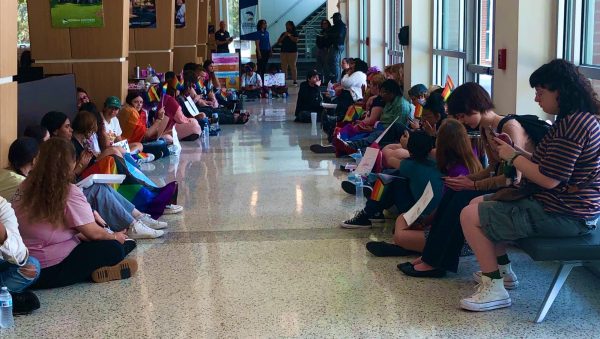(Opinion) What Students Need to Know About Mandatory Fees

What Students Need to Know About Mandatory Fees and What Questions They Need to be Asking.
Mandatory fees accompany every full-time Georgia Southern student’s semesterly tuition. They are a vital portion of the funding allocated towards student activities and services, but do students know where their money is going?
“Mandatory student fees shall be used exclusively to support the institution’s mission to enrich the educational, institutional, and cultural experience of students,” according to the University System of Georgia (USG) Board of Regent Policy 7.3.2.1.
At a more specific glance, mandatory student fees require full-time students to pay certain expenses such as the Activity Fee, Athletic Fee, Health Fee, Recreation Fee, and Technology Fee. A detailed list of all mandatory student fee categories and amounts can be found here.
Across Georgia Southern’s three campuses, the total cost of student fees ranges from $100 to over $750. Students at the Liberty campus are only required to pay the Technology fee, whereas Statesboro students pay eight separate fees. Additionally, some of the same fees between campuses are more expensive at the Statesboro Campus. Why is that?
Simply put, the Statesboro campus hosts more events and engages with more student activity and athletic programs.
“[In] the 2021-22 school year, over 85,000 students (as logged by Eagle Engage) attended events that were supported by the Student Activity Fee,” according to LaShai Campbell, the business manager of the office of the Vice President of student affairs.
68,479 of these students were from the Statesboro campus. The Statesboro campus hosted roughly 58% of these events, beating the Armstrong campus, the Liberty campus, and online events combined. Additionally, Statesboro offers distinct services, such as transportation across campus.
Campbell explained that the mandatory fee committee is responsible for determining how the funds are allocated, and these final decisions are then approved or disapproved by the USG. 50% percent of the decision making committee is made up of students, as required by the USG.
At the student government association meeting on October 17, there was a listening session in which students were invited to learn about the mandatory student fees. After Campbell listed off the fees and their descriptions, she opened the floor for discussion, which was met with silence. This could make one question whether students and student organizations understand or care about the details of mandatory student fees and their involvement in the decisions about where this money is going.
“It would be nice if we, as students, were told more directly about what our fees go towards,” said Chase Amoroso, a senior multimedia journalism student from the Statesboro campus.
As the student body’s voice and the nominators of the student representatives of the fee committee, is the SGA proficiently handling and distributing information about matters such as mandatory student fees?
Amoroso said he believed that his fees went towards lab equipment like camera and lighting equipment repairs but could not assess satisfaction because he was unaware of exactly how these funds were allocated.
Campbell said that no questionnaires or polls had been distributed to assess the student body’s satisfaction with their mandatory fees and the allocation of these funds.
A few resources on the Georgia Southern website describe what these funds are being used for, but this page is missing a comprehensive list of the programs and investments supported by these fees.
Students know that the university uses their mandatory student fees to enrich their educational and cultural experience as stated by the outlined policies, but what is the university doing to ensure students understand exactly where their money is going?
Be sure to check your student inbox and our website to stay up to date with the latest Armstrong news.









